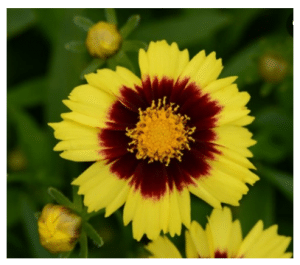
July Newsletter
July Gardening in the Greater Jacksonville Beaches area!
- What To Plant
- What To Do
- Plant Focus: Carolina Sapphire Cypress and UpTick Coreopsis
- Growing Sweet Potatoes on the Beach
- Preventing Disease in your Landscape
July in the South – parties and outdoor life are normal but now we have extreme heat too! This is when we often have to try a little harder to make our outdoor spaces shine, and heat tolerant plants become an important part of our gardening. Finding plants that will bridge the gap between the cool-loving spring annuals and perennials, and those that will begin thriving again in the fall is a challenging but rewarding search. Here are some tips for what to plant and how to keep your landscape in top condition.
CLICK HERE FOR CONSULTATION FORM!
What to Plant
The following plants are heat tolerant plants you can cultivate this time of year:
Annuals (Or Grown As Annuals): If supertunias, petunias and alyssum are planted so they receive afternoon shade or in moveable containers, then these can often be babied through the hot season until they can proliferate again in the fall. If pruned after blooming you can get another flush of blooms. More reliable for July are African daisy (Osteospermum), ajuga, angelonia, calibrachoa, caladium, celosia, coleus, coneflower, diamond frost (Euphorbia), gazania, geranium (Pelargonium), gerbera daisy, gold dust (Mecardonia), gomphrena, licorice plant, lobelia, melampodium, nemesia, pentas, portulaca and purslane, sunpatiens, sweet potato vine (Ipomoea), torenia, variegated shell ginger (Alpinia), vinca (Catharanthus), and zinnia.

Perennials: Most perennial types can be planted now. Many perennials have very long bloom times and are luckily also good plants for pollinators. These include agastache, beach (dune) sunflower, buddleia, bulbine, bush daisy, canna lily, cat whiskers (Orthosiphon), cigar plant and Mexican Heather (and other Cupheas), firecracker grass (Russelia), firespike (Odontonema), gaura, gerbera daisy, hibiscus, lantana, Mexican petunia (Ruellia), plumbago, porterweed, salvia, shasta daisy, shrimp plant (Justicia), and yarrow. Native plants like black-eyed susan (Rudbeckia), blanket flower (Gaillardia), cone flower, milkweed (Asclepias), powderpuff (Mimosa), stokes aster and tickseed (Coreopsis) are good choices for a more natural landscape. You can install groundcovers and border plants like African and Regina iris, Asiatic jasmine, autumn fern, Aztec grass, blueberry flax (Dianella), daylily, foxtail fern, holly fern, liriope, mondo grass, purple queen (Tradescantia) and society garlic. Also, many bulbs can be planted at this time, particularly agapanthus, caladium, canna, and crinum. Ornamental grasses include fakahatchee, fountain grass, muhly grass, pampas grass and sea oats.

Tropicals: These are one of the few groups of plants that appreciate our summer heat; you can continue to plant tropical vines, ground covers, shrubs and small trees. Some of the great tropicals we grow here seasonally or with occasional protection are bird of paradise, bougainvillea, copperleaf (Acalypha), cordyline, croton, elephant ear (Alocasia and Colocasia), heliconia, ixora, mandevilla, papyrus, schefflera, snowbush, stromanthe, and variegated shell ginger. For ideas on including tropicals in your landscape and suggestions for plants, see our handout called Tropic Life. CLICK HERE!
Succulents: Most succulents thrive in heat. We have a large area full of cacti and succulents.
CLICK HERE FOR CARE GUIDES!
Vines: Vines which can be planted this month include black-eyed susan vine, bleeding heart vine (Clerodendrum), blue sky vine, bower vine, butterfly vine (Mascagnia), Carolina jessamine, confederate jasmine, coral honeysuckle, crossvine, dutchman’s pipe, English ivy, hyacinth bean, Mexican flame vine, moonflower, morning glory, and passion vine.
Palms, Shrubs and Trees: Even with the heat, July can be a good time to plant palms, shrubs and trees because of the frequent rains. Palms include cabbage, cardboard, Chinese fan, Christmas, coontie (not a true palm), European fan, lady, needle, palmettos, pindo, ponytail, pygmy date, sago, queen, Washington, and windmill.
Shrubs and trees that can usually be found at this time are abelia, arborvitae, azaleas, bamboos, banana shrub, bananas, bottlebrush, boxwood, buddleia, camellia, clusia, crape myrtle, cypress, duranta, eugenia, fatsia, firebush (Hamelia), gardenia, hollies, hydrangea, Indian hawthorn, Japanese blueberry, junipers, ligustrum, loropetalum, mimosa, nandina, oleander, pineapple guava, pinwheel jasmine, pittosporum, podocarpus, princess flower (Tibouchina), pyracantha, roses, Texas sage (Leucophyllum), thryallis, viburnum and yesterday-today-tomorrow. If you don’t find what you’re looking for, we may be able to locate it for you. Don’t forget edibles – blackberries, blueberries, citrus, culinary ginger, figs, goji berry, grapes, papayas, pineapples, pomegranates, raspberries, and turmeric. We carry blackberries and raspberries with low chilling-hour requirements to grow in our mild climate, and a grape that can take the heat.
Vegetables and Herbs: We are in that midsummer lull when few vegetables grow. The best vegetables for the heat are okra, eggplant, hot peppers, lima beans, Southern peas, watermelon and sweet potatoes, but for the most part they should already be growing. Malabar spinach can still be planted, and this is the last month to plant Southern peas and okra. Except for some of the cherry types, tomatoes are giving up by now. You can start seeds, though, for a second round of tomatoes, cucumbers and peppers. Also start your seeds for pumpkin time! See our handout Planting Guide for North Florida Vegetables, for vegetable growing information. CLICK HERE!
Many herbs don’t grow well after late spring, but these can stand up to the summer heat: African blue basil, basil, bay laurel, chives, Cuban oregano, cilantro, lavender, lemon balm, lemon grass, lemon verbena, Mexican tarragon, mint, oregano/marjoram, purslane, roselle, rosemary, and stevia. Herbs needing a cooler setting can be moved to a shadier area if they are potted. Low-growing herbs may be more susceptible to the fungal problems associated with humidity. It may help to thin the base of Rosemary. For mints that grow large and choke themselves out in a container, smaller portions of the root and stem can be transplanted to another pot. See our handout Planting Guide for North Florida Culinary Herbs for additional growing information. Also see Herbs for North Florida, for some specific variety and usage information. CLICK HERE!
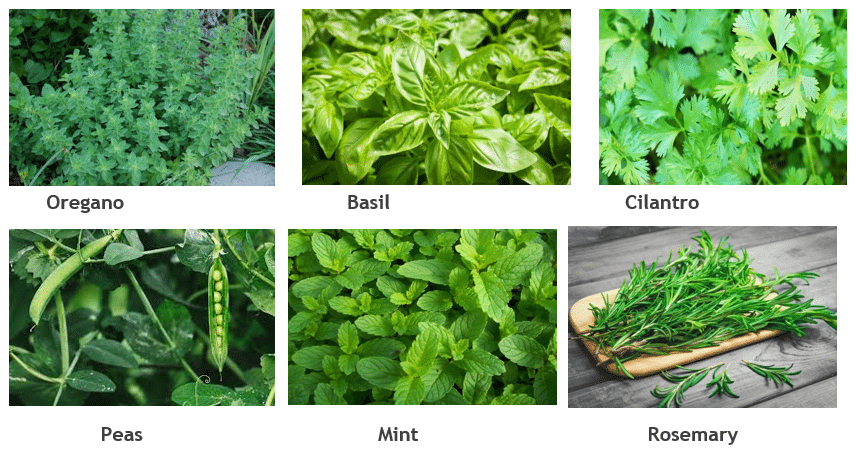
Plants that can also be grown indoors: “Houseplants” don’t have to be kept inside your house! Growing conditions for much of the year here support these transitional plants outdoors where more favorable conditions of fresh, humid air and brighter light may help them fight off potential pests and disease. Outdoor beneficial insects may also contribute to their well-being. If you put them outdoors, introduce them gradually to the increased light, avoiding direct sunlight for most. Indoor plants include African violets, air plants, anthuriums, bromeliads, calathea, dieffenbachia, dracaena, ferns, ficus, hoya, Norfolk Island pine, orchids, palms, philodendrons, polka dot plants, pothos, snake plants, spathe plants, spider plants, succulents, venus flytraps, zz plants and more.
Plant Focus
Carolina Sapphire Cypress
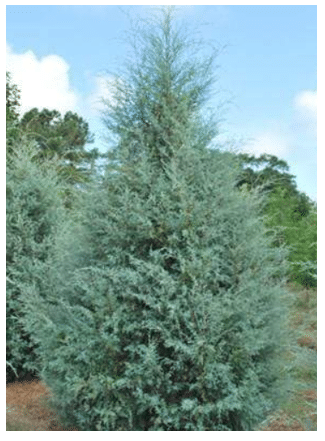
This is a great choice for the south. Carolina Sapphire was developed by Clemson University from the species Arizona Cypress, which is the only cypress native to the U.S. It manages our heat well and prefers good drainage so it grows well in sandy soils. It is faster growing than Leyland or Blue Ice Cypresses. Although often used as a screen, it’s lacey silvery blue/teal coloration makes it pretty enough to be a specimen tree. It also produces attractive, small, rounded, mahogany cones. During the holidays, its aromatic branches can decorate your home with festive greenery.
UpTick Coreopsis
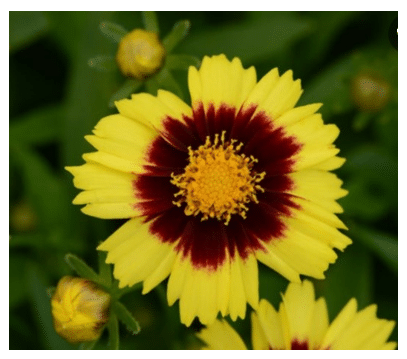
Any coreopsis is a worthwhile addition to a perennial garden, but this series is particularly useful with its tidy mounding habit, good mildew resistance and exceptionally large flowers that bloom longer than the species. Available colors in the series are Yellow and Red (pictured), Gold and Bronze, Cream and Red and Cream (Cream has a slight yellow center). Coreopsis is the official state flower of Florida, granted this distinction for populating roadside plantings so well. Important for pollinators, it is also low maintenance and disease resistant.
What to Do
Irrigate: Complete watering restrictions and schedules for Duval County can be found at this link: www.sjrwmd.com/wateringrestrictions. Adjust automatic irrigation based on rainfall and apply no more than 1/2 to 3/4″ at a time, to avoid runoff. When afternoon thundershowers begin this time of year, it may be better to run automatic irrigation systems manually to avoid over-watering, or to use a Shut-off Device that detects rainfall. There are even devices and apps that allow you to control your irrigation from offsite. If you are concerned whether your landscape is receiving enough water, look for these symptoms of drought stress:
- Grass leaf blades folding in half lengthwise.
- Grass taking on a blue-gray tint rather than maintaining a green color.
- Footprints or tire tracks remaining visible on the grass long after they are made.
- Plant wilting may be observed on landscape plants.
When drought stress becomes apparent in 30-50% of the yard, then water should be applied on the next allowed watering day.
It’s a good idea to check your sprinkler system for any breaks or misaligned spray heads at least monthly.

Mow: At the highest summer temperatures, grass growth slows. Never remove more than 1/3 of the leaf blade at a time and mow to the highest recommended height to support root growth. Here are the recommended mowing heights for several N. Florida grasses: Bahia grass at 3-4 “, Zoysiagrass coarse textured varieties at 2 to 2½” and fine textured at 1″, Centipedegrass at 1½ to 2½”, Seashore Paspalum at 1½ to 2″, and St. Augustinegrass at 2½” for dwarf and semi-dwarf cultivars such as Delmar, Seville and Captiva, and 3.5 to 4″ for standard St. Augustinegrass, especially if growing in shade. To maintain at a height of 4″, grass should be mowed before it grows to a height above 6″. Sharpen mower blades frequently, even monthly. Avoid mowing when grass is wet.
Prune: With hurricane season coming, this is a good time to prune any dead limbs and open up trees to allow better airflow. General deadheading is helpful any time of year. Don’t prune Azaleas any later than mid-July to avoid removing next year’s blossoms. If your Drift or Knockout roses missed an early summer pruning, then it’s probably time. See our Drift and Knockout Rose Care Guides. CLICK HERE!
Harvest: Although few citrus are probably producing at this time, there may be some lemons and limes to harvest. Some berry types will ripen this month. And of course, continue to harvest any vegetables. Most herbs benefit from regular trimming of leaves.
Mulch: Replace deteriorating mulch with a new 2-3″ layer to moderate soil temperatures, retain soil moisture, and reduce erosion and weeds. Organic matter is added to the soil as mulch decomposes. Mulch also creates an attractive unified look to highlight your plantings. Florida’s warm and often wet weather can lead to rapid breakdown of mulch. We can help you determine how much mulch you need for a specific area.
Solarize the soil: This is a good time to use a cover of clear plastic over garden soil as a nonchemical method to control soil borne pests such as nematodes, insects, weeds, and pathogens by raising the temperature of the soil. It also speeds the breakdown of organic material so more soluble nutrients are in the soil. Dig a trench around the area to be solarized, wet the soil to 12″ deep, cover the area with 1-4 mil clear plastic and fill in the trenches over the plastic so there is a tight seal over the soil. Keep this down for 6-8 weeks, repairing any tears that might occur. When the process is finished, disturb the soil as little as possible so weed seeds which were deep below the surface aren’t brought up.
Fertilize: Lawn fertilization isn’t recommended at this time, but other plantings may benefit from fertilizer in July. Select a fertilizer with at least one third of its nitrogen as a slow release (non-water-soluble) form. GreenEdge is a superior, environmentally sound, slow release fertilizer with organic nitrogen in a 16-0-8 plus 1% Mg formula for your garden.
Fruiting shrubs and trees generally need more fertilizer during the year than other shrubs and trees. Recommendations for fruit tree products and frequency depends on the type of tree. Fertilize blueberries lightly every other month. Figs and bananas should be fertilized monthly. Citrus should be fertilized 3 or 4 times during the growing season, starting in March (more often for younger trees), so it’s likely you should fertilize them this month. See our handout Citrus Care Guide for more information. CLICK HERE!
If you pruned your knockout and drift roses this month it’s also a good time to fertilize them with a slow release fertilizer. Liquid fertilizers can be applied every month. See our Drift and Knockout Rose Care Guides. CLICK HERE!
Fertilize palms about every other month during the growing season. Palms need a high potassium to nitrogen ratio plus added magnesium so an 8-2-12 fertilizer with 4% magnesium works well.
Discontinue or minimize fertilizing if herbs and vegetables go into obvious decline with the heat. Otherwise, feed vegetables a slow/continuous release organic fertilizer applied every 3 to 4 weeks (herbs at half strength). In general, even though it’s a little costlier, try to use a slow release fertilizer or fertilizer with at least 30% as a slow release component. These feed plants more consistently and lessen pollution.
Control Weeds: Unless weeds are extensive, non-herbicidal methods of weed control should be considered first, and now that the weather has heated up its even more important to know your limits with chemical options. Post-emergent herbicides shouldn’t be used on lawns if summer air temperatures are greater than 90° since this could damage the turf. Post-emergent herbicides are also less effective if the weed is mature, producing seed, under drought stress, or if mowed within several days of herbicide application. Maintaining proper mowing height and frequency can eliminate many annual weeds in lawns. Alternative methods may be needed for weeds which establish and flower below the recommended height of the grass. If weeds aren’t extensive, its simpler to manually pull them. In beds and paths and where turf isn’t grown, a deep layer of mulch can smother weeds. In nonflammable areas such as sidewalk cracks, weeds can be torched.
If herbicides are required, Fertilome Weed Free Zone is a post-emergent herbicide for broad leaf weeds useful in 45-90°F temperatures. Fertilome Selective is useful for spot treatment in temperatures between 50-85°. To control nut-sedge and dollar weed, make sure you’re not creating favorable conditions by over-watering your lawn. Always choose an herbicide that lists your lawn type on the label and follow instructions carefully as they can vary.
Monitor and Control Insects and Disease: Continue to monitor pests and disease on houseplants, lawns and gardens. Fungal disease can occur almost any time of year, especially if the landscape is over watered or watered at the wrong time of day. Bonide Infuse Systemic Disease Control can prevent and control fungal growth.
In lawns, watch for discolored areas, which may be a sign of disease. Take-all root rot is a fungal disease of lawns, occurring in St. Augustinegrass and bermuda grass, and often showing in spring or early summer when the turf is emerging from dormancy. A stressed lawn or prolonged periods of rain can also bring on the disease. Control is best when fungicides are applied early, so planning for next year is especially important. Turf grass decline can be difficult to diagnose but a maintenance program with Rockaway is a first step to controlling and identifying these problems.
Frequently scout the vegetable garden and landscape plantings for insects as they are easier to control when first noticed.
- Thrips, scale, and mites become more active in warm weather. Check for thrips on leaves and flowers of roses, hibiscus and gardenias. Spinosad is particularly effective on thrips and caterpillars (also leafminers, spider mites, mosquitoes, ants and fruit flies) and lasts up to 4 weeks. Additionally, it is safe for people, beneficial insects and adult butterflies, and safe for bees once it has dried.
- Inspect annuals, pyracantha and junipers for spider mite damage. These almost invisible pests live on the underside of leaves, sucking out their juice, and sometimes create webbing across the leaves. Spray with horticultural oil or use insecticidal soap in several applications.
- Aphids feed on tender new growth. They can sometimes be controlled with sprays of water or by picking them up with a vacuum or sticky tape. Insecticidal soaps can be used but these will also harm Monarch butterflies and their young, so typically not used on Butterfly Weed/Asclepias.
- Cabbage palm caterpillars may appear in late July. To control, apply Dipel or Sevin to palms.
- Neem oil is a good combination product that can be used to combat insects, mites and fungus.
- Beneficial insects such as ladybug beetles and lacewing can control soft-bodied insect pests. To maximize the effectiveness of these natural enemies, provide habitat and relief from high temperatures by increasing the amount and diversity of plants in your landscape. Refer to our handout Ladybugs, for storage and release information. CLICK HERE!
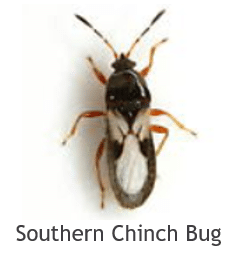
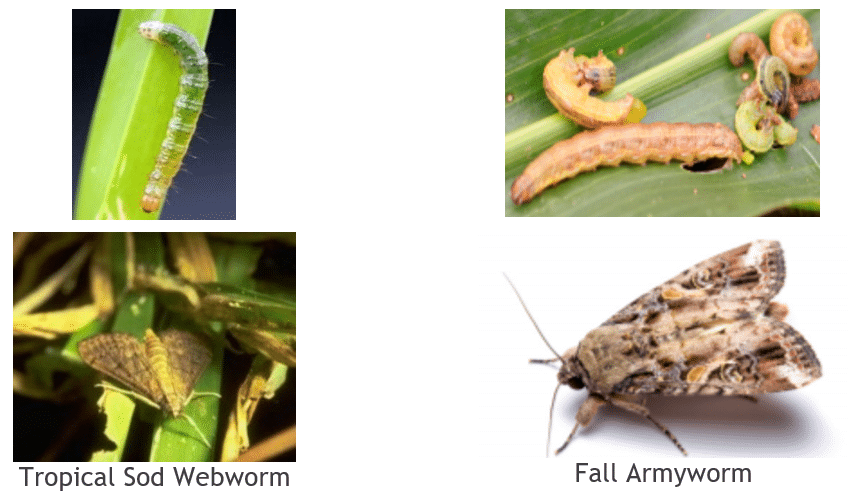
The major lawn pests active this time of year are Southern Chinch Bug, Tropical Sod Webworm and Fall Armyworm.
Chinch bugs suck the juices from St. Augustinegrass at or just below the soil level. Injured plants look stunted, yellowed, wilted, or dead. Yellowish to burnt-brownish patches are often first noticed in sunny areas along sidewalks and driveways, or in poorly irrigated areas. Young chinch bugs will be reddish with a white band across their back. They become black as they mature, with white patches on their wings. To help control the problem, limit nitrogen fertilizer and reduce thatch thickness to minimize the bug’s habitat.
Newly hatched larvae of tropical sod webworm skeletonize grass blades while older larvae chew on grass blades near soil surface. Small patches of grass may look ragged and irregular. The adult moth does not cause damage but the life cycle from egg to adult only requires 5-6 weeks at 78°F.
Fall armyworm caterpillars skeletonize grass blades then later create bare spots.
Younger caterpillars of both armyworm and webworm are more easily controlled with reduced-risk products like B.t., halofenozide and spinosad. Bifenthrin also targets both these caterpillars and Chinch bugs. You can use a product like Hi Yield Bug Blaster Plus Above/Below. Rotate combination products to reduce resistant populations and spot treat when possible.
In weedy areas and open fields, Lubber Grasshopper adults may be found from March to November. It may be possible to avoid the use of an insecticide by hand-picking the grasshoppers and mowing vegetation to appropriate heights.
Be aware of areas that collect water so you can minimize breeding sites for mosquitoes.
For any problem, it may occasionally be less costly and more environmentally friendly to replace infected plants with another species that would be more appropriate for the site. Don’t be reluctant to remove a plant that just isn’t working.
Growing Sweet Potatoes (Ipomoea Batatas) on the beach
What could be better than growing a vegetable that you can practically ignore after planting? Sweet potatoes have few pests, require very little care except for irrigation and flourish in north Florida’s hot summers. They also do quite well in sandy poor soils, although they will grow even better when some organic matter is added. One medium, baked sweet potato with skin (2 inches in diameter, 5 inches long, approximately 114 grams) provides over 400 percent of your daily vitamin A requirement, 25 percent of vitamin C, 25 percent of vitamin B6, 12 percent of potassium and 4 grams of fiber. Additionally, it has 2.3 grams of protein, 0 grams of fat, and small amounts of calcium, iron, magnesium, phosphorus, zinc, vitamin E, thiamin, riboflavin, and folate. Sweet potatoes are a great source of beta-carotene, a powerful antioxidant that gives orange fruits and vegetables their vibrant color. All this is packed in just 103 calories. The leaves are also edible and add a mild flavor to greens.
Although traditionally grown in garden beds, sweet potatoes can also be grown in containers, perfect for growing in the home garden in the beaches area. Sweet potatoes are a tropical perennial, but in containers they are best grown as annuals. Yield may not be as high as in-ground, but the biggest difference is the increased need for water in containers. Toward the end of summer when maturing tubers need a significant amount of water, it may be necessary to water 2-3 times daily when temperatures are in the upper 90’s.
But container growing also has several benefits. It makes it possible to grow in a small or urban garden, smaller containers can be moved to maximize their exposure to sun and there is greater protection against slugs than in a standard garden. The concern of nematodes and sweet potato weevils, which can sometimes be a problem in soils which have grown sweet potatoes or other plants in the morning glory (Convolvulaceae) family for consecutive years is greatly lessened. Finally, the soil in raised containers warms up sooner than the ground – important for a crop that needs to start in soil that is between 70 to 80° and has a relatively long time to maturity.
The best varieties for growing in containers are ones that grow more in bush form, such as Puerto Rico (also called Porto Rico) or Vardaman. Puerto Rico produces medium size orange-fleshed potatoes with a taper. Vardaman has gold skin with deep orange flesh, reportedly one of the best tasting, and high yielding.
Varieties that grow somewhat more viney can also be grown. Both Beauregard and Centennial are more running in habit (sometimes referred to as semi-bush) and are probably the 2 most popular sweet potatoes in America. You can leave the foliage growing across your container, or some gardeners train it up a trellis to manage it, but it will have to be tied. Some trimming will not affect the growth of the tubers. In fact, some people don’t even mind sharing some of the vegetation with deer as they have a fondness for it. Beauregard has high yields, reddish purple skin, deep orange flesh and stores well. Beauregard is also resistant to fusarium wilt and cracking. Centennial has copper skin and pale orange flesh, and also stores well. All these sweet potatoes are fast, maturing in about 90 to 110 days, but smaller potatoes (baby bakers) can be harvested within 6 weeks.
To start your crop, sweet potato slips can be purchased from online garden sources, local garden centers or hardware stores, rooted or unrooted. Slips are baby plants which have sprouted from a mature potato. If your slips have been purchased rooted in small containers and their roots have begun encircling the pot, the roots should be cut away so new roots can support better tuber growth.
If you want to grow your own slips, select 1½” diameter sweet potatoes from last fall’s harvest and start six to eight weeks before planting time. Planting time can be as early as 4 weeks after the last frost, as long as the soil has warmed to at least 70°. Soak the sweet potatoes in water for two hours, then place them in a pot half filled with well-draining soil or clean sand. Cover with 2 inches of loose soil. Keep the soil consistently moist in a warm and sunny spot indoors. When you are ready to plant, cut or gently break away your slips from the potato. Slips should be 6 to 10 inches long when removed. Keep them moist while they grow roots. Although tempting, it is not a good idea to use sprouts grown from store-bought sweet potatoes. You won’t know which specific variety you are growing, the potatoes may have been treated to inhibit sprouting and there is much greater chance of disease.
It is generally recommended to plant sweet potato slips from March through June throughout Florida. Sweet potatoes require a minimum soil temperature of 60° although most recommend at least 70-80°, or growth will be slow. Optimum air temperature for growth is 65-95° or even higher. If air temperatures drop below 55°, sweet potato plants can be damaged. Although perennial, they are tropical and will succumb in fall once the weather cools. Yellowing vines signal a dying crop and time for harvest. Vines should be cut immediately if they experience a sudden hard frost since their deterioration can also begin deterioration of the underground potato.
PLANTING: To plant the slips, use a container mix amended with compost and sand so that it is loose and well-draining. A grow bag, whiskey barrel, wood, clay or plastic container with drain holes can be used. A container that holds about 2 cu. ft. of soil (about 15-20 gallons) with a depth of about 18″ works, providing enough root and tuber room, but is harder to manage than a smaller container. For sweet potatoes, its bottom handle is convenient for upending the bucket to gently unload the potatoes at the end of the season.
Fill the container with soil a little higher on one side, leaving about 2″ at the top to allow for expanding tubers. Lay the slips down across the mound with the roots at the lower end of the soil.Cover roots and stems with soil, then water in. Supply about ¾” water weekly while they are young and a little more as they mature. Decrease water during the 2 weeks prior to when you will do your final harvest. Aim to keep your crop moist but not water-logged and don’t water so much that you have a lot of run off which can leach nutrients from the soil. You can use a seedling mulch such as chopped straw.
To reduce cold stress and speed early growth, newly planted sweet potato slips can be protected from cool spring nights by covering with garden fabric, Spanish moss, paper, pine straw or plastic. It may be necessary to weed your container early on, but once the potato plant begins growing it will smother any competition. Fertilizing increases yield but some feel decreases flavor. Tuber and root crops need more potassium than other vegetable crops, so you can supply it by adding some muriate of potash, but you should limit nitrogen.
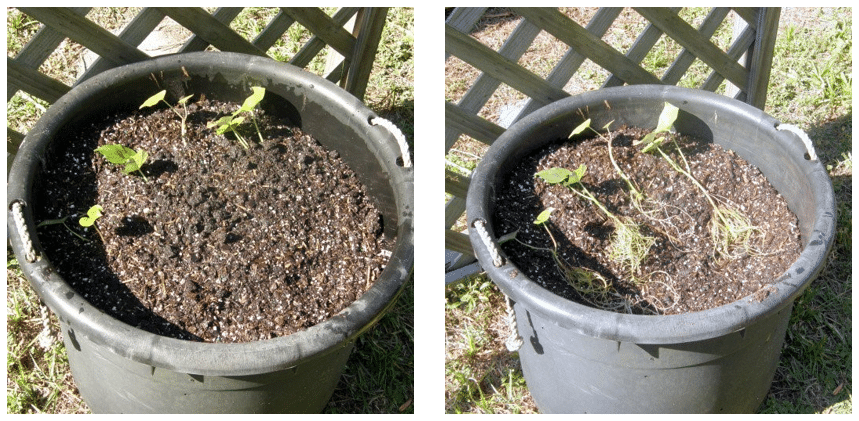
HARVEST: Individual sweet potatoes that are less than full size can be dug beginning about 6 weeks after planting the slips. Do a final harvest once the temperatures start cooling in fall and leaves begin to yellow, usually about late September or early October. Cut away the vines and dig the tubers or gently flip over the container. Sweet potatoes are easier to dig than regular potatoes because the tubers tend to cluster closer to the stem. As you harvest, treat the tubers carefully because the skin is thin and the flesh bruises easily. For best storage quality, harvest sweet potatoes before the soil temperature drops below 55°.

Image from John Moody featured on The Gardening Channel.
DRY: Immediately after harvest, let the sweet potatoes fully air dry, then shake off excess soil. Don’t keep them in the sun more than an hour and do not wash them.
CURE: Cure in a warm (85°if possible), humid, well-ventilated area out of the sun for 8-10 days after harvesting. This will help heal cuts and bruises, improve storage and develop their sweetness.
STORE: For long term storage, choose firm, bruise-free, well-shaped sweet potatoes with fairly even coloring. Store in a cool (but above 55°), dry, well-ventilated area away from light. Do not refrigerate sweet potatoes unless they are already cooked. Cold temperatures will give sweet potatoes a hard core and affect the flavor. Properly cured sweet potatoes should store for 5 to 12 months unrefrigerated.
Eat sweet potatoes baked, mashed, candied, caramelized, deep-fried, stuffed or boiled!
Preventing Disease in your Landscape
Gardening is meant to create beautiful, peaceful, stimulating, awe inspiring, rewarding, and nourishing places. But sometimes plants get sick and die. Some plant diseases have had tremendous impacts on society, such as the fungal blight which caused the Irish potato famine in 1845. Later, in America, when the chestnut disease blight was started by imported Chinese chestnut trees, over 30 million acres of American chestnut trees died in less than 40 years. Pathogens can plug up plants’ vascular systems, rot their roots so they can’t extract water and nutrients, and turn plant tissue into a dark slimy ooze. Not a pretty picture!
Plant problems and disease can be caused by environmental conditions such as a late frost, nutrient deficiencies and water stress, or by living agents such as fungi, bacteria, viruses, nematodes and parasitic plants. A correct diagnosis of a plant problem is an involved process of observing the plant, its environment and other plants in the area. Identifying symptoms alone may not lead to a diagnosis since completely different factors may cause similar symptoms on the same plant. And bacterial and viral infections are extremely difficult to control in the home garden. The best cure for disease in the garden is prevention!
Know your enemy. Fungi are mostly microscopic organisms that sometimes produce visible fruiting bodies called mushrooms. They are the largest group of plant pathogens and cause the most garden disease. Understanding their biology can help us avoid a lot of infection. Fungi reproduce by spores and the millions they release are carried by the wind and other elements, sometimes landing on leaves. If conditions are right (moisture, temperature), the spores will germinate and penetrate leaf tissue, creating lesions, spots and other symptoms. Infection can come from soil-borne fungi too. Adhering to the following guidelines can lead to a healthier landscape:
- Observe plants frequently as disease can spread quickly. This also gives you a better feel for what is normal for your landscape and may not actually be a cause for concern.
- Plant cultivars that have been developed to resist specific diseases. For tomatoes, look for plants labeled with V,F or T after their names. These refer to resistance to verticillium, fusarium and tobacco mosaic diseases.
- Give plants adequate space. Crowding decreases air flow and keeps foliage from drying.
- Use mulch under your plantings, but not right up to the base of the plant. Mulch may prevent soil from splashing onto leaves and distribute soil-borne fungal disease.
- Avoid overhead irrigation as much as possible and don’t apply water when the vegetation will remain wet for long periods, such as at night. Drip irrigation and soaker hoses direct water to the soil, not the foliage.
- Be careful to follow fertilizer recommendations. Overfertilizing creates succulent growth with an overabundance of nutrients that is attractive to some disease organisms. Slow, steady growth with slow-release nutrients is best.
- Remove and destroy diseased plant tissue. Don’t compost this material as composting may not kill the organism. Pruning shears used to prune the plants should be sterilized with a Lysol solution. It’s a good practice to sterilize shears between every plant, even if you don’t see disease.
- Rotate annual crops and try a different type of landscape plant in a spot where a plant died. Most plant diseases are host-specific so they will attack similar plants or plants in the same family. For herbs and vegetables, refer to our Planting Guide for North Florida Vegetables CLICK HERE! and Planting Guide for North Florida Culinary Herbs CLICK HERE! to see the families of crops. Avoid planting crops of the same family in consecutive years.
Fostering a healthy environment and using time-tested gardening techniques can minimize disease in your landscape.
